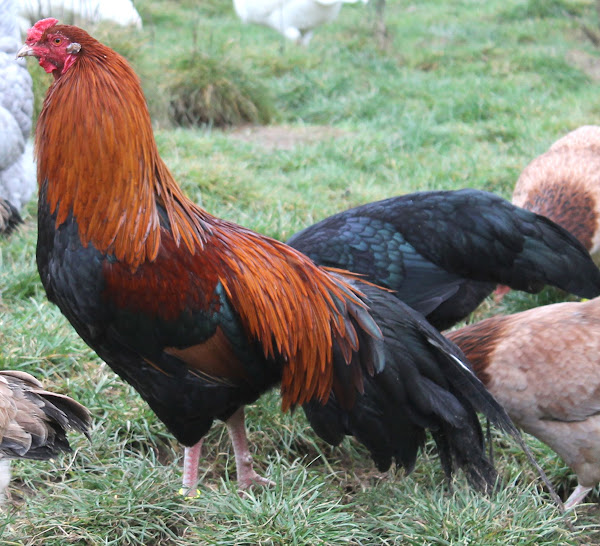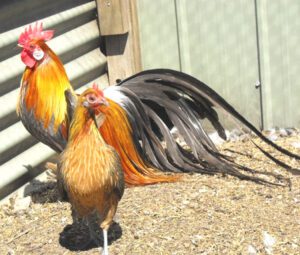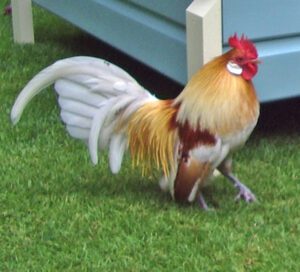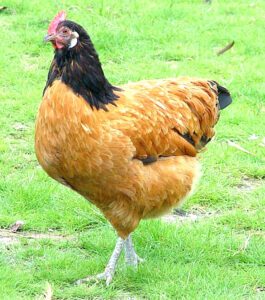Whether you are an existing keeper of many chickens or are just starting a chicken flock, you must need to know how to add new chickens to existing flock.
Learning about introducing new chickens to existing flock will help you to avoid introducing disease and parasites into the flock.
Introducing new chickens to your existing flock suddenly is not a good idea, and you can’t expect everything go peacefully after doing so.
It’s the nature of chickens to drive off an unknown chicken from the flock. It’s the general behavior of chickens and actually normal for an established flock to aggressively go after the interloper.
So you have to introduce the new chickens to an existing flock properly. And it is very important to know about how to add new chickens to existing flock. Not all the chickens are of same behavior and nature.
Each bird will have a different response to the newcomer. Some birds won’t tolerate an intruder, but some are actually easy going.
Some birds can become very aggressive towards the new birds. And the aggression can escalate to bloodshed if the new chickens are introduced into a confined area where there is no space to escape. A chicken might pin another one down and viciously peak at her head.
How to Add New Chickens to Existing Flock
Chickens are very social birds and they form strong social groups and establish a pecking order within a few days of being introduced to each other. And the chickens actually love to stay in a group.
Generally an established chicken flock will not welcome other chickens outside their group and can be surprisingly vicious to the newcomers.
And introducing new chickens to an established flock will need patience and often takes a couple of weeks to settle.
Methods for introducing new chickens to an existing flock can vary according to your individual set up, so there is no single solution for maintaining a happy flock.
However, here we are describing more about how to add new chickens to existing flock.
Keep the New Chickens Separate For Several Weeks
You should keep the new chickens in a separate coop for several weeks, and watch them carefully for any signs of sickness. The new birds should not share the same ground or air as the old chickens.
You should wash your hands and clean the bottom of your boots after interacting with the new chickens. Doing so will help to avoid inadvertently transmitting illnesses.
Size of the New Chickens
Chickens can be real bullies (especially when they have smaller and weaker birds to pick on).
So the new birds should be similar in size and age, to help minimize bullying and fighting.
On the other hand, adding a large number of fit, young birds, can cause stress to a smaller number of more mature chickens.
Ensure Adequate Room for the New Chickens
Before introducing new chickens, ensure you have adequate room in the coop for accommodating the new birds.
This will help to reduce the chance of bad habits that come from over crowding. Cannibalism is one of the worst results of over crowding.

Also ensure some hiding space if the existing birds attack the new chickens.
Keeping in the Same Coop
You can keep the new chickens in the same coop, but in a separate pen (separated with net or fence).
Doing this will allow the older chickens to satisfy some of their curiosity without instant squabbling.
Keep the Old Chickens Busy by Providing Distractions
You can hang a distraction in the pen such as something shiny or nail a few ears of field corn in accessible places for keeping the old chickens busy while the new chickens explore.
Attention of the old chickens will be more focused on scratching and pecking at those distractions rather than at the new chickens on the flock.
Move the Chickens in a New Location
If possible, move both your new and old chickens to an entirely new and different location.
This throws your older girls off balance, as it is not their home, and so they are more likely to be less defensive, and harsh towards the newcomers.
After few days or week, things will start to sort themselves out, and all your chickens will accept the new additions. And finally peace will be restored within your flock once again.
Add New Birds at Night
You can keep the new chickens to the existing flock during the night, so that the flocks can wake up together.
Generally this will probably reduce the squabbling and the pecking of the new chickens.
Provide Plenty of Food and Water
You must have to ensure there are plenty of food and watering areas so that the old chickens can’t guard the new chickens for accessing food and water.
You should feed and water the new chickens properly before adding them to the existing flock.
Remove the Injured Chickens
You should remove the injured chickens from the flock. Remove the injured bird at the first sign of bright blood and treat the bird with an ‘anti-peck ointment’ or pine tar to discourage the pecking from going further.
Chickens will naturally peck at fresh blood and can kill an injured chicken very quickly.
Hope you have learned a lot about how to add new chickens to existing flock. By following these methods your birds will accept the new additions after a week or so. And finally peace and happiness will be restored again within your flock once again. Thank you!







We’ve introduced 3 new chickens (6 months old) to our existing flock (5 hens, 1 rooster). We had a fence in their large coop dividing them for about six weeks prior to physical introduction. Of course, the three newcomers have been bullied (mostly from our 2 rhode island reds and 1 rooster) but no blood or injuries. It’s been 2 weeks living together now and the new chicks still huddle in the corner often when older chickens come near and the smallest one (cream Brabanter) still gets bullied daily. Will this ever end or should I remove the new chickens permanently? They don’t free range but the coop and run are very large. I’m trying to be patient but also don’t like the bullying still happening after weeks!
do you have to introduce roosters to other roosters the same way?